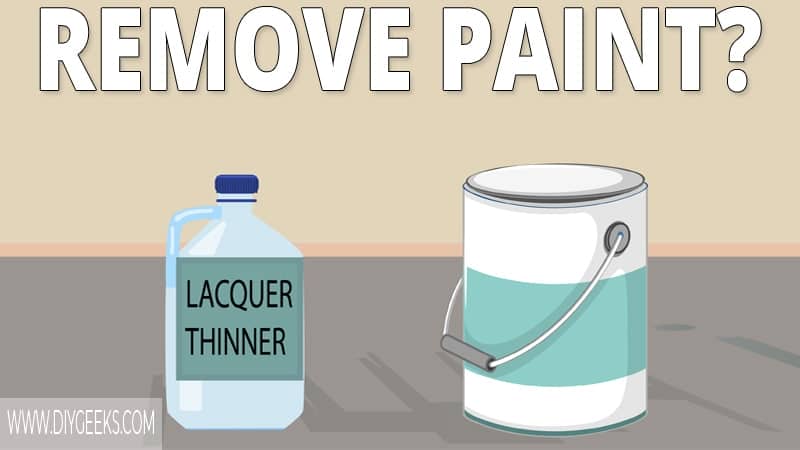Lacquer thinner is a strong solvent used to thin and dissolve paint coatings. Its main purpose is to thin lacquer paint, but it can be used for other painting processes too.
You can remove paint finishes from surfaces with lacquer thinner. Lacquer thinner will penetrate the paint finish, dissolve the paint binder and particles, and liquefy the paint.
However, don’t use too much of it over porous surfaces as it can damage or discolor them.
Can You Remove Dried Paint With Lacquer Thinner?
You can remove dried paint with lacquer thinner. Lacquer thinner penetrates and dissolves the paint finish as it’s formulated with paint-removing additives, such as acetone.
You can remove water-based and oil-based paint or sealer finishes. However, don’t use too much lacquer thinner as it can damage the surface.
Lacquer thinner is designed to thin lacquer sealer, one of the strongest sealers. If the lacquer thinner is strong enough to thin a strong sealer, it’s strong enough to remove dried paint.
How To Remove Paint With Lacquer Thinner?
To remove paint with lacquer thinner, do the following things.
- Prep the Workspace.
- Scrape Paint Off.
- Apply Lacquer Thinner.
- Wash the Surface.
The tools you need for this project are listed below.
- Lacquer Thinner
- Clean Rags
- Scraper or Putty Knife
- A Soft Scrubbing Brush or Sponge
- Warm Water
- Dish Soap
- Drop Sheet
- Linseed Oil
1. Prepare The Workspace
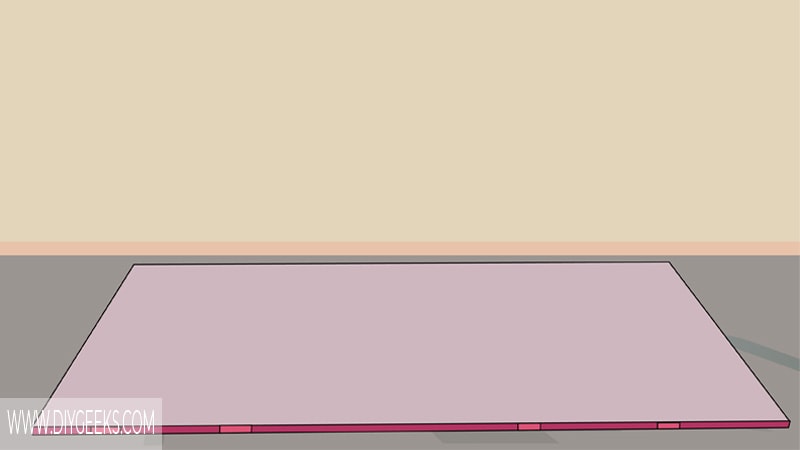
Prep the workspace by removing nearby furniture and objects, and covering the floor with a dropsheet.
Clean the paint finish to remove dirt, dust, or debris that can prevent lacquer thinner from penetrating the finish. To clean the paint finish use a damp rag.
2. Scrape Paint Off
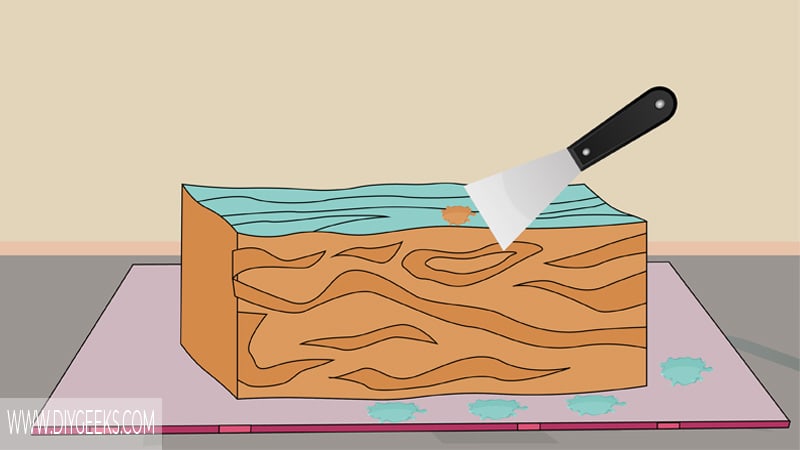
Scrape paint off to reduce the paint volume that lacquer thinner has to remove. Lacquer thinner can remove paint without scraping it, but this will make it easier.
To scrape paint, put a paint scraper or putty knife under the paint coating and lift it repeatedly until the coating is removed.
Don’t use metallic paint scraper for sensitive surfaces, such as wood or plastic, as you can scratch or damage them.
3. Apply The Lacquer Thinner
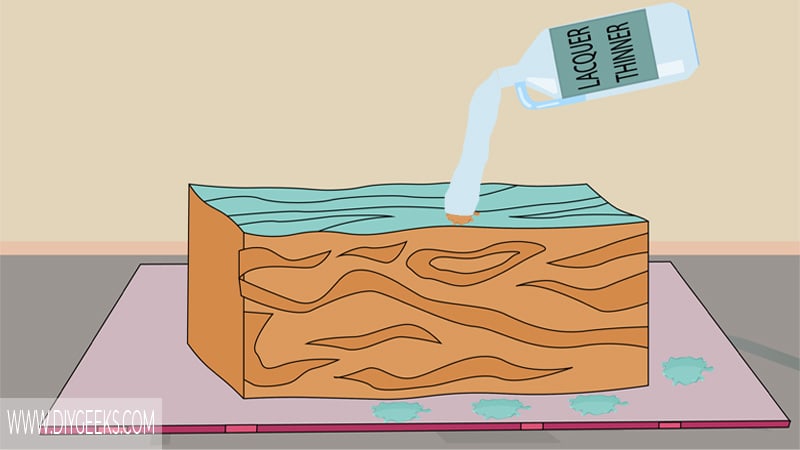
Pour lacquer thinner over the paint finish and wait 10 minutes before removing the paint. Lacquer thinner will penetrate the paint coating, dissolve the paint binder and particles, and liquefy the paint. Once the paint is liquefied, you can wipe it off.
For porous or sensitive surfaces, damp a rag with lacquer thinner and use the dampened rag to wipe the surface. Porous or sensitive surfaces will get damaged or discolored if you pour lacquer thinner directly.
4. Wash the Surface
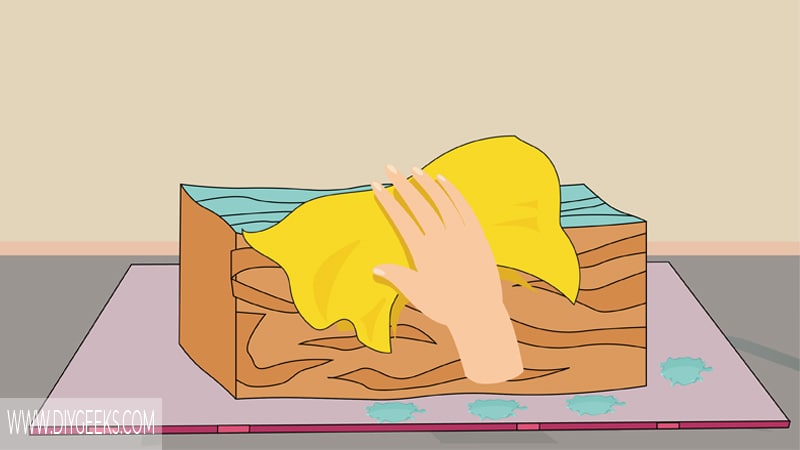
Wash the surface to remove the lacquer thinner residue and check if the whole paint finish is removed. The surface will get discolored and may not accept paint if you leave lacquer thinner over it for too long.
To wash the surface and remove lacquer thinner residue, do the following things.
- Mix dish soap with warm water.
- Pour the warm soapy water over the surface and use a soft sponge to scrub it.
- Use a rag for porous surfaces, such as wood.
- Dip the rag into the mixture (soap and water), then squeeze the rag over the surface.
- Allow the surface to dry properly before re-painting it.
For leftover paint stains, re-apply lacquer thinner and wait 10 minutes before using a paint scraper or scrubbing brush to remove them. Ensure to re-clean the surface if you re-apply the lacquer thinner.
Can You Remove Wood Stain With Lacquer Thinner?
You can remove wood stains with lacquer thinner. Lacquer thinner will penetrate the wood stain, dissolve the particles and the binder, and liquefy the stain.
Wood stain doesn’t have a protective finish and will get removed if exposed to paint-removing solvents, such as lacquer thinner.
To remove wood stain with lacquer thinner, do the following things.
- Apply the lacquer thinner over the stained surface.
- Wait 10 minutes.
- Wipe the wood stain from the surface.
- Clean the surface.
Can You Remove Paint From Different Surfaces With Lacquer Thinner?
Wood
You can remove paint from wood with lacquer thinner. However, don’t use too much lacquer thinner as it can discolor or damage the wood surface.
Here is how to do it:
- Douse a rag with lacquer thinner.
- Use the dampened rag to dab the wooden surface repeatedly.
- Wait a few minutes.
- Wipe off the soft paint.
- Clean the wood.
You can also use a brush to spread light coats of lacquer thinner over wood. Don’t leave it on wood for more than 7-10 minutes, as it can damage it. You can use mineral spirits, acetone, and rubbing alcohol as an alternative to it.
Metal
You can remove paint from metal with lacquer thinner. But, don’t use lacquer thinner over bare metal surfaces as it increases the chances of rust.
Here’s how to use it:
- Apply it over the metal using a rag.
- Wait a few minutes.
- Wipe the paint off the metal.
- Rinse the metal with clean water.
Though lacquer thinner can be used to remove paint from metal, it’s better to use gentler solvents to prevent damage. Paint removers designed for metal surfaces are a better choice.
Concrete
You can remove paint from concrete surfaces with lacquer thinner.
